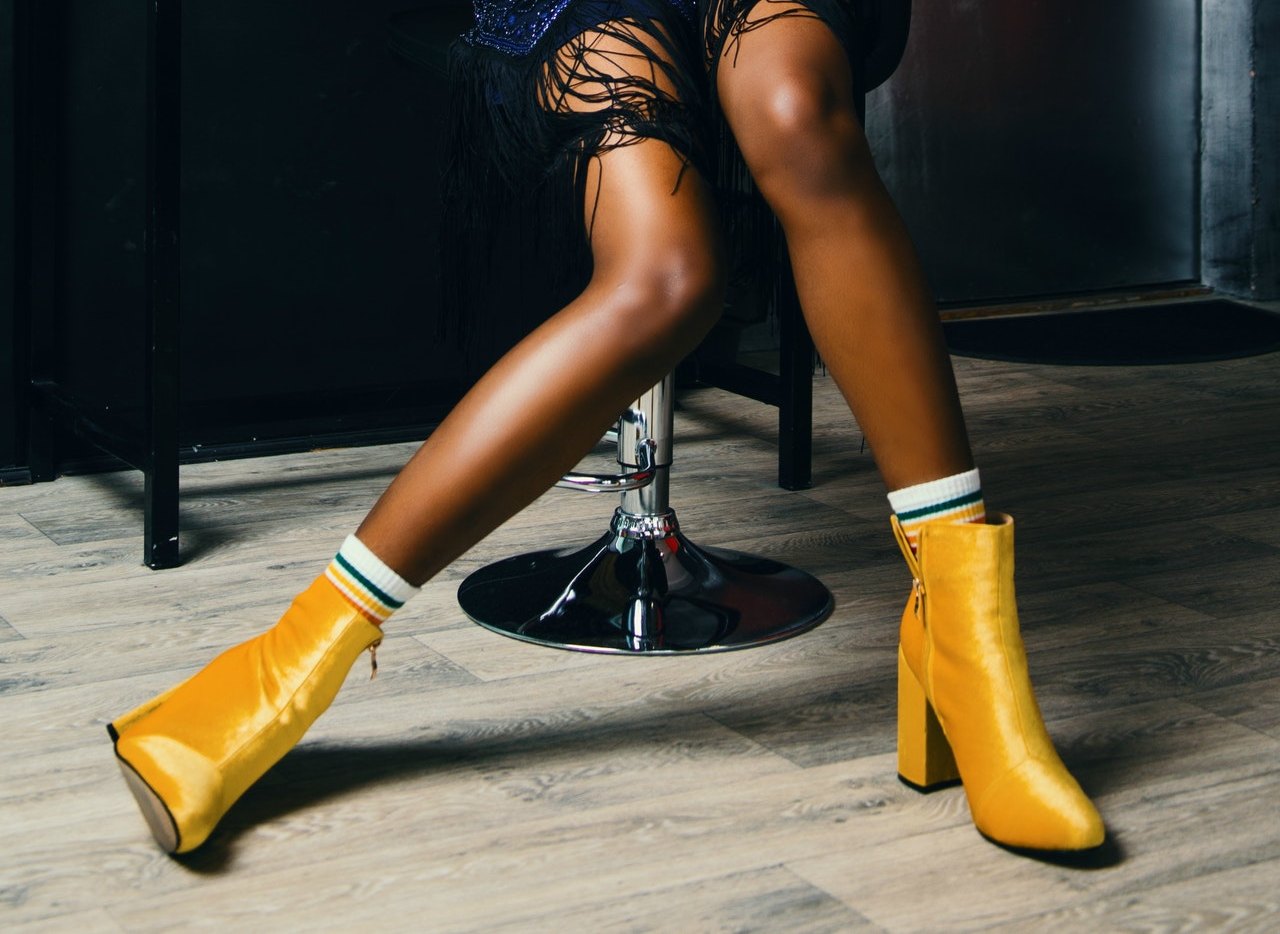Fashion shows are commonly organized by fashion designers and luxury brands to showcase their designs and introduce their new collections into the market. Since every element of a fashion show is completely live, from the models to the photography and all the action, it is important to get all the visuals right. This can only be done with the help of a good lighting design.
Runway lighting is an integral component of the show, perhaps even the most crucial, and it can make or break a designer’s collection. Great lighting does justice to every outfit, visually enhancing the colors, adding drama, and bringing out every significant detail of the outfit. It sets the atmosphere and mood of the space according to the theme, and therefore largely affects the success of the show. Whether you’re lighting for a runway show, a corporate red carpet event, or any celebrity photography occasions where the focus is on clothing either worn or staged as works of art, strategic lighting design is key.
Here are some of the main components of fashion show lighting that you must consider for a successful show:
· Light Quality:
A talented designer can create a collection of stunning, utterly elegant outfits, but without high-quality lighting, they may end up looking dull, washed out, or flawed. For fashion shows, high-quality lighting entails light sources with a Color Rendering Index of over 90 that accurately captures the true color and details of the outfit. Additionally, it is advisable to use a medium color temperature light source, preferably warm, even lighting that offers visual comfort without altering the color tones of the outfits.

Deep Thoughts on the Spring 2013 Dior Haute Couture Show, Into the Gloss, via Pinterest
When designing for the runway, it is important to remember that you’re also designing for photography. Ensure that your lighting aids in flawless photography, and do a test run if possible. You should be able to accurately capture an outfit from any angle on the stage. An adequately illuminated runway with uniform diffuse lighting will soften the shadows, which will consequently flatter both the model and the outfit. Invest in quality lighting that highlights the model and draws all the attention to the outfits.
· Lighting Positions:
Runway lighting should be able to illuminate the model from every direction, adequately lighting both the front and the back of the model to allow for an all-around view of the outfit. As a result, you cannot position your directional lighting directly overhead, perpendicular to the floor, because this will generate unflattering shadows. To avoid this, the light fixtures are positioned above the runway, aimed at a suitable angle that does not shine into the eyes of the audience or the model.
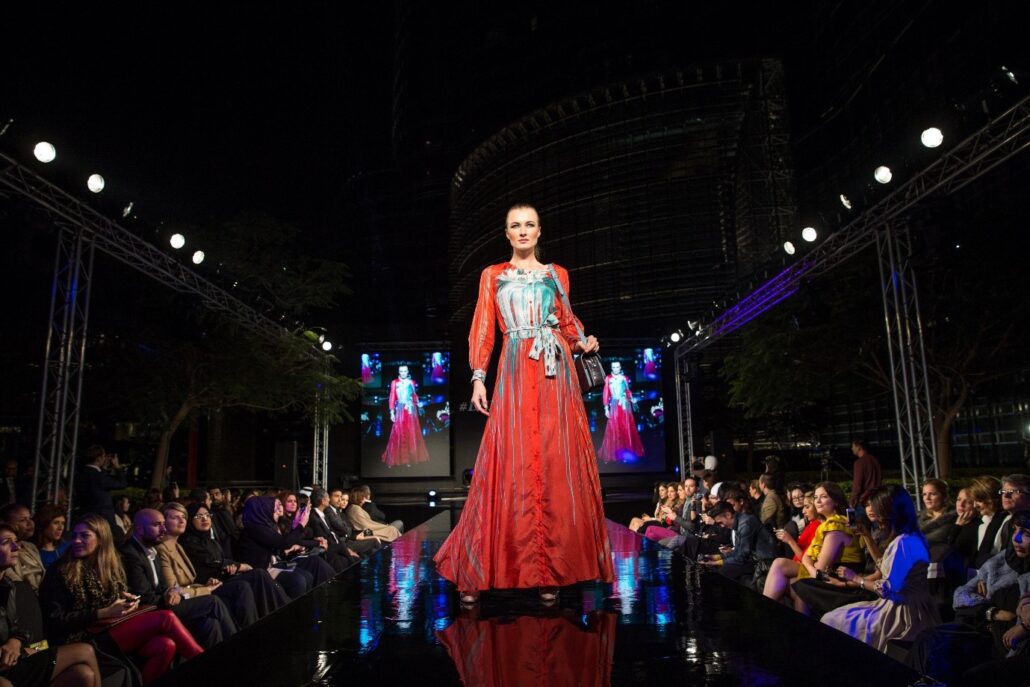
Woman Wearing Red Blue Long-Sleeved Dress, via Pxfuel
You should generally position your light fixtures across the entire platform to ensure that there is adequate lighting regardless of the position of the model. Models often pose at the end of the runway, giving photographers adequate time to get the perfect shot of the outfit. Therefore, you need to provide additional lighting at the end of the runway for this purpose.
· Light Distribution
There should be even light distribution on the stage such that there are no hot spots and cold spots. Uneven light distribution becomes a great challenge when trying to capture outstanding photographs during the show.

Bottega Veneta Otoño-Invierno 2012/2013, Trendencias, via Pinterest
The beam spread should be precise, ensuring that the light is contained to just the stage without an overspill to the audience. Beam angle adjustment is, therefore, a crucial specification when selecting fashion show lighting, since it plays a major role in regulating the spread of light.
Whether or not you decide to illuminate the audience, it should be at a lower intensity compared to the lighting on the runway so as not to draw any attention from the stage. This allows the outfits on the runway to stand out in contrast.
· Light Intensity
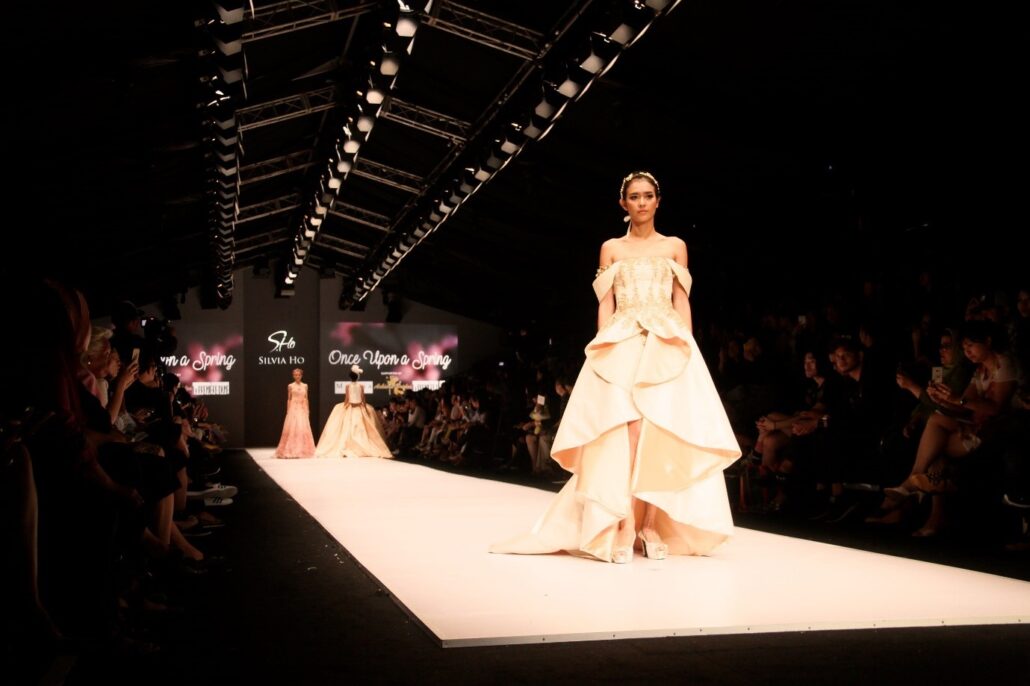
Jakarta Fashion Week Indonesia, via Pxfuel
The light intensity on the runway should be carefully set to ensure visual comfort. The light intensity should be high enough to capture all the fine details of the outfit, but not too high as to wash out the colors. On the other hand, low-intensity lighting will make the outfits look dull and dreary. Use LED Spotlights and Flood Lights to illuminate the runway stage, creating a clear contrast from the background and accentuating the outfit on the model. A dimmable fixture will allow you to adjust your light intensity to the recommended levels and as per the theme.
· Special Effects
Traditionally, fashion show lighting incorporated even, uniform lighting primarily designed to allow for good photography. However, the modern take on runway lighting aims to create a show with creative lighting. The theatrical lighting complements the design style, integrating different colors, image projections, light sequences, and special effects such as twinkles and sparkles.
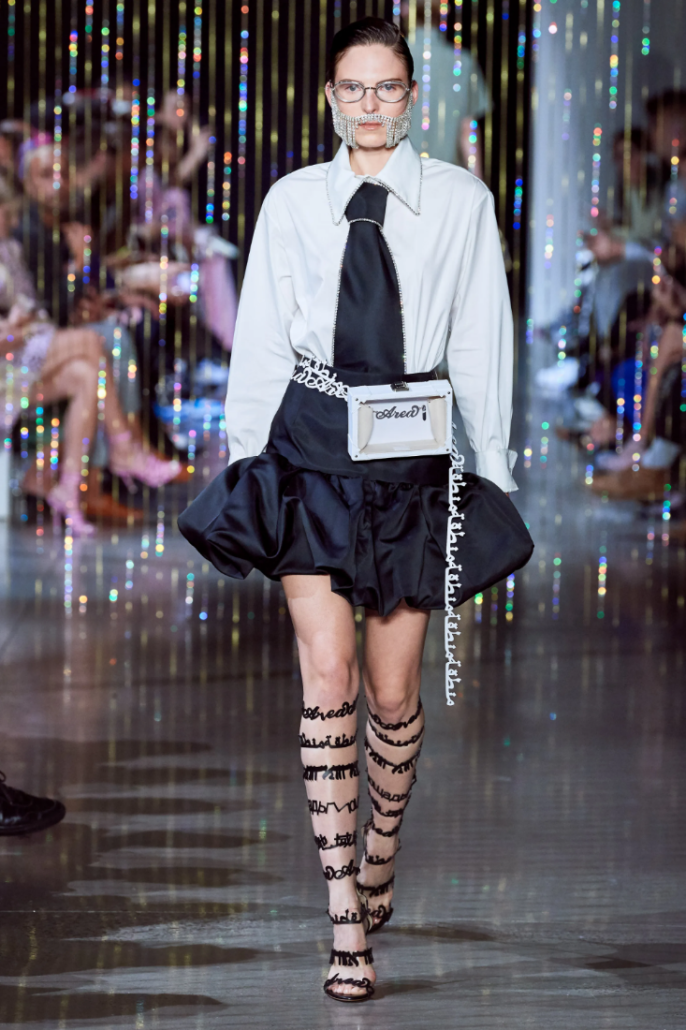
Area Spring 2020 Ready-to-Wear Fashion Show, Vogue Magazine, via Pinterest
Lighting in modern fashion shows go the extra mile, creating a mood, and transforming the environment with the application of light. Working with the designer’s vision, you can create dramatic effects with lighting to complement their design collection. For instance, you can set up playful lighting for a fun, artsy collection, and a subtle mood for a vintage clothing collection, while still adequately illuminating the models with flattering light.
When working with special effects in runway lighting, it is important to remember not to draw attention from the models and the outfits, but simply to complement them. Since the runway is the focal point and the main act, all additional effects should not overpower it. At the end of the day, you want people to remember the outfits that were displayed, and not just the dramatic lighting.
What is the Best Light Fixture to Use?
Commonly used for theatre and stage lighting, the ellipsoidal reflector spotlight is the most highly recommended fixture for fashion show lighting. Apart from its sheer simplicity, it emits a brilliant beam of light with beam adjustment, which allows you to accurately frame your light to the runway. Additionally, some models of this fixture are compatible with accessories that can change the shape and color of the beam.
Conclusion
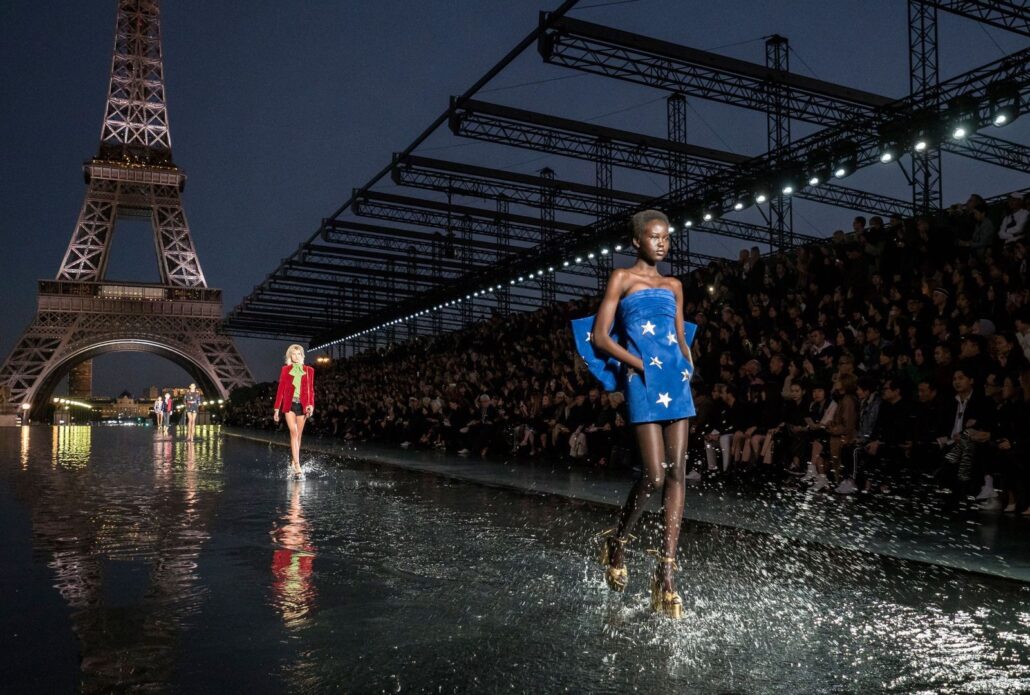
Models walked on water for the Saint Laurent show, Harper’s Bazaar, via Pinterest
While our focus during fashion shows is usually on the designer outfits and the models, it is quite easy to overlook the crucial part that lighting plays in the success of the show. A lot of work goes into the lighting design of a fashion show. Taking into consideration the designer’s brief, the design style of the outfits to be displayed, the theme of the set, and the careful distribution of light, every fashion show lighting comes with its unique requirements and challenges. Incorporate the above tips and tricks when lighting for runways, fashion shows, and red carpet events for a successful show.


